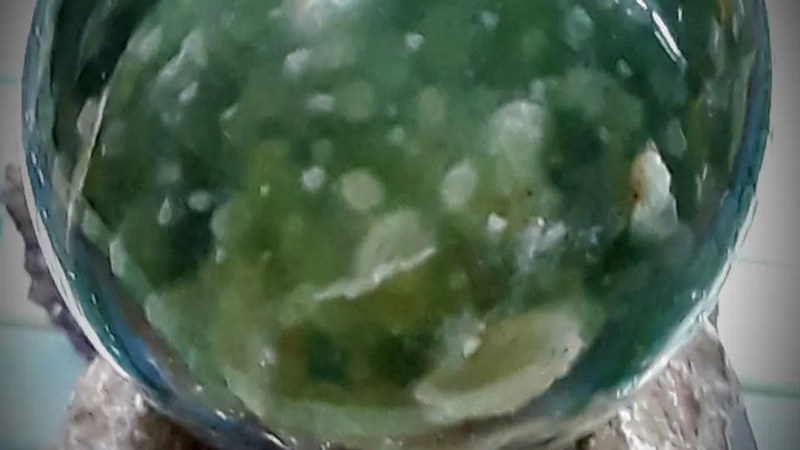
Jade: A symbol of peace promoting well-being and prosperity.
Jade is believed to bring balance and harmony to one's life. It is thought to help align the mind, body, and spirit, promoting a sense of overall well-being. By fostering harmony, jade can contribute to a more peaceful and balanced existence. Jade is associated with wisdom and clarity of thought. It is believed to enhance mental faculties and help in making sound decisions. Jade's energy is said to support rational thinking, discernment, and insightful problem-solving.
Jade is used as a support stone and amulet. Having jade with it or placing it in the workplace or in a corner of the room removes negative forces from the environment and gives a special joy and peace to the soul. Green and purple jade is in contact with the heart chakra and affects the heart emotionally and physically. And is effective in deepening breathing. Balances the nervous system and metabolism. And it turns the state of excitement and aggression into calm and stillness. If we put it under the pillow, it strengthens the memory. And it gives the person the power to interpret dreams. Jade is a small stone and helps us make strong and important decisions.
Jade is often believed to possess transcendent properties that can impact one's life in various ways. While these properties are largely based on traditional beliefs and metaphysical concepts, many people find personal meaning and benefit from incorporating jade into their lives. Green jade is a very good choice for sensitive and emotional people and strengthens their self-confidence and control their emotions. This stone gives man the faith to achieve his every wish in life. Some also believe that jade stone brings good luck. Jade stone brings joy to the soul and peace and is suitable for concentration. Green jade is also known as "soothing crystal". Other Properties of Jade Stone
- Balance and regulate the fourth chakra
- Freeing the mind from negative thoughts
- Jade is a symbol of peace and purity
- Attract success and prosperity and happiness
- Very strong protector and especially for children against disease
- To help better understand the opposite sex
- Personality stability and increased self-sufficiency
- The ideal stone for communication with spirits and the metaphysical world
- Protector and shield in spiritual and religious ceremonies
- It has many uses for longevity
- Great for business prosperity and the blessing of life
Jade is thought to have a calming influence on emotions. It is believed to help alleviate anxiety, stress, and negative emotions, promoting emotional balance and stability. Jade's energy is said to encourage feelings of serenity, peace, and inner harmony. Jade is often associated with abundance and prosperity. It is believed to attract wealth, success, and good fortune. Jade's energy is said to create a positive and auspicious atmosphere that can invite opportunities and financial well-being.
Jade is considered a protective stone, shielding its wearer from negative energies and harm. It is believed to have a purifying and detoxifying effect on the body, promoting physical health and vitality. Jade's energy is said to support the immune system and aid in the body's healing processes. Jade is associated with spiritual growth and enlightenment. It is believed to assist in deepening one's spiritual practice, enhancing intuition, and connecting with higher realms of consciousness. Jade's energy is said to facilitate spiritual awakening and inner transformation.
-
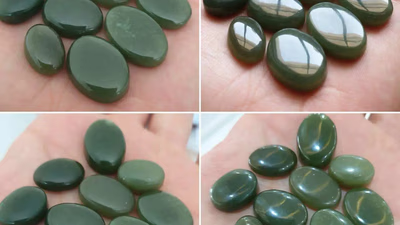
Myanmar"s Hpakant region is renowned for its high-quality jadeite, often called "Burmese jade. " This area has been a significant source of jade for centuries. Guatemala"s Motagua River Valley produces vibrant green jadeite, valued in the international market. China, with its rich jade culture, is known for nephrite jade from regions like Xinjiang and Hetian. Canada has emerged as a notable producer of nephrite jade, particularly in British Columbia. New Zealand"s South Island is famous for pounamu, which holds cultural significance for the Māori people. Australia and Kazakhstan also have significant jade deposits, with Australian jade known for its deep green color. The United States has nephrite deposits in Alaska and California, with notable locations like Big Sur.
Globally, much of the world"s jade is found around the Pacific Ocean rim due to geological processes. Countries like Russia and Central American nations also contribute to the global jade market, producing unique varieties prized for their colors and craftsmanship.
-

Jade is revered for its believed properties that promote balance, harmony, and well-being. It is thought to align the mind, body, and spirit, fostering a peaceful existence. The stone is associated with wisdom and clarity, enhancing mental faculties and decision-making abilities. Jade"s energy is said to support rational thinking and problem-solving while removing negative forces from environments. Green and purple jade are linked to the heart chakra, promoting emotional stability and deepening breathing. Additionally, jade is believed to strengthen memory and interpret dreams when placed under a pillow. Many consider jade a protective stone that shields against negative energies while attracting success and prosperity. Its calming influence helps alleviate anxiety and stress, encouraging emotional balance.
Furthermore, jade is thought to purify the body, supporting physical health and vitality by aiding the immune system. It also plays a role in spiritual growth by enhancing intuition and facilitating spiritual awakening. While these properties are rooted in traditional beliefs, many individuals find personal significance in incorporating jade into their lives. "
-
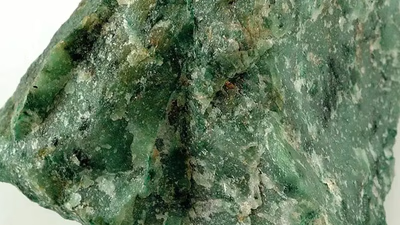
Jade is a durable gemstone but can be damaged by harsh chemicals, prolonged water exposure, and rough surfaces. To maintain its quality, avoid using household cleaners and remove jade jewelry during activities that may cause damage. For cleaning, use a soft cloth or brush with warm water and mild soap. Store jade in a soft pouch to prevent scratches and avoid extreme temperatures to prevent cracks. Jade consists of nephrite and jadeite, with nephrite being less valuable due to its lower hardness. Professional cleaning is recommended for intricate pieces or significant dirt buildup.
-
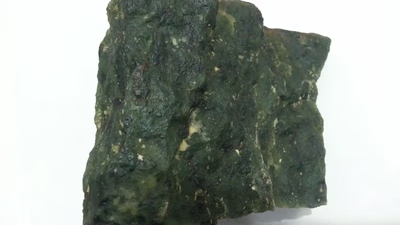
The price of green jade varies significantly based on factors such as color, transparency, purity, weight, and extraction location. Prices can range from $1 to $1 million depending on these attributes. The most valuable jade is sourced from Myanmar, with annual trading occurring in major centers like Rangoon and Hong Kong. In these markets, jade is sold in various forms including carved jewelry and antiques. The quality of jade is crucial; uncut or unprocessed pieces pose risks as they may be misrepresented. For instance, Myanmar green jade can cost between $5 to $2,500 per gram, while Khorasani jade from Iran is priced below $1 per gram. Black jade generally has a lower price point than green jade, with values around $2-3 per gram. Antique jade pricing is complex and requires expert evaluation due to factors like age and historical significance. Raw jade stones are often sold by weight; in Iran, prices for raw jade can be under $50 per kilogram but vary widely based on quality.
-
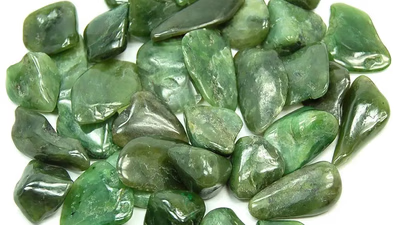
Visual examination is the first step in jade stone detection, focusing on characteristics like color, transparency, and texture. Experts compare stones to known samples and assess their overall appearance. Density and hardness measurements help distinguish between jadeite and nephrite, with jadeite being harder. The classification system categorizes jade into types A (Imperial), B (treated), and C (low quality). Misidentification can occur as jade resembles emeralds but differs in color variety and market value. Jade"s historical classification evolved from a single mineral to two distinct types recognized by mineralogists. Advanced techniques such as refractive index measurement, spectroscopy, and X-ray diffraction are essential for accurate identification. These methods help detect synthetic or treated stones, while UV light can reveal fluorescence patterns unique to jadeite.
Expertise from gemologists is crucial for authenticating jade due to the high market value of genuine specimens. Understanding these detection methods is vital for buyers to avoid counterfeit stones. "
-
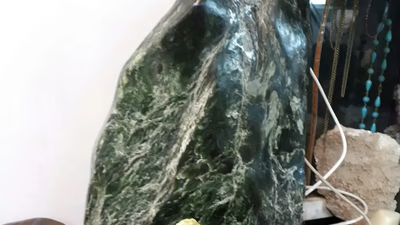
Jade quality is primarily determined by color, transparency, texture, and luster. Jadeite and nephrite exhibit a variety of colors, with vibrant hues being more desirable. Jadeite"s value increases with its transparency; high-quality jadeite is translucent, while nephrite is typically opaque. Jade is categorized into several grades: Category A represents high-quality jade with excellent color and transparency; Category B involves surface treatments that enhance appearance but compromise purity; Category C includes industrially dyed stones; Category B-C combines both methods; and Category D features a composite structure with plastic. Texture plays a crucial role in valuation, with smooth surfaces free from blemishes being preferred. Luster varies from matte to glassy, with bright reflections indicating higher quality. The craftsmanship involved in carving also significantly impacts jade"s value, as intricate designs and expert techniques enhance desirability.
-
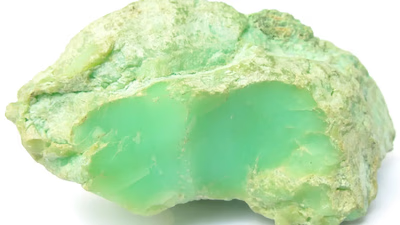
Jade is a gemstone with deep cultural significance, particularly in East Asia, where it symbolizes status, spirituality, and protection. In Chinese culture, jade is associated with virtues like wisdom and purity, believed to ward off evil spirits and provide spiritual protection. Various colors of jade exist, with the most valuable being the emerald green variety from Myanmar. Historically, jade carvings date back to 5,000 BC in China and have been used for good luck and healing properties. The value of jade is determined by its color, transparency, and texture; darker shades command higher prices. However, buyers must be cautious of counterfeit stones that are difficult to distinguish from genuine ones. The classification system includes "Imperial Jade" (Jade A), treated stones (Jade B), and low-quality dyed stones (Jade C). Consulting a reputable jeweler is essential to avoid purchasing fakes.
Jade"s connection to spiritual growth and enlightenment enhances its appeal as a bridge between physical and spiritual realms. Its beauty and rarity have captivated enthusiasts for centuries. "







